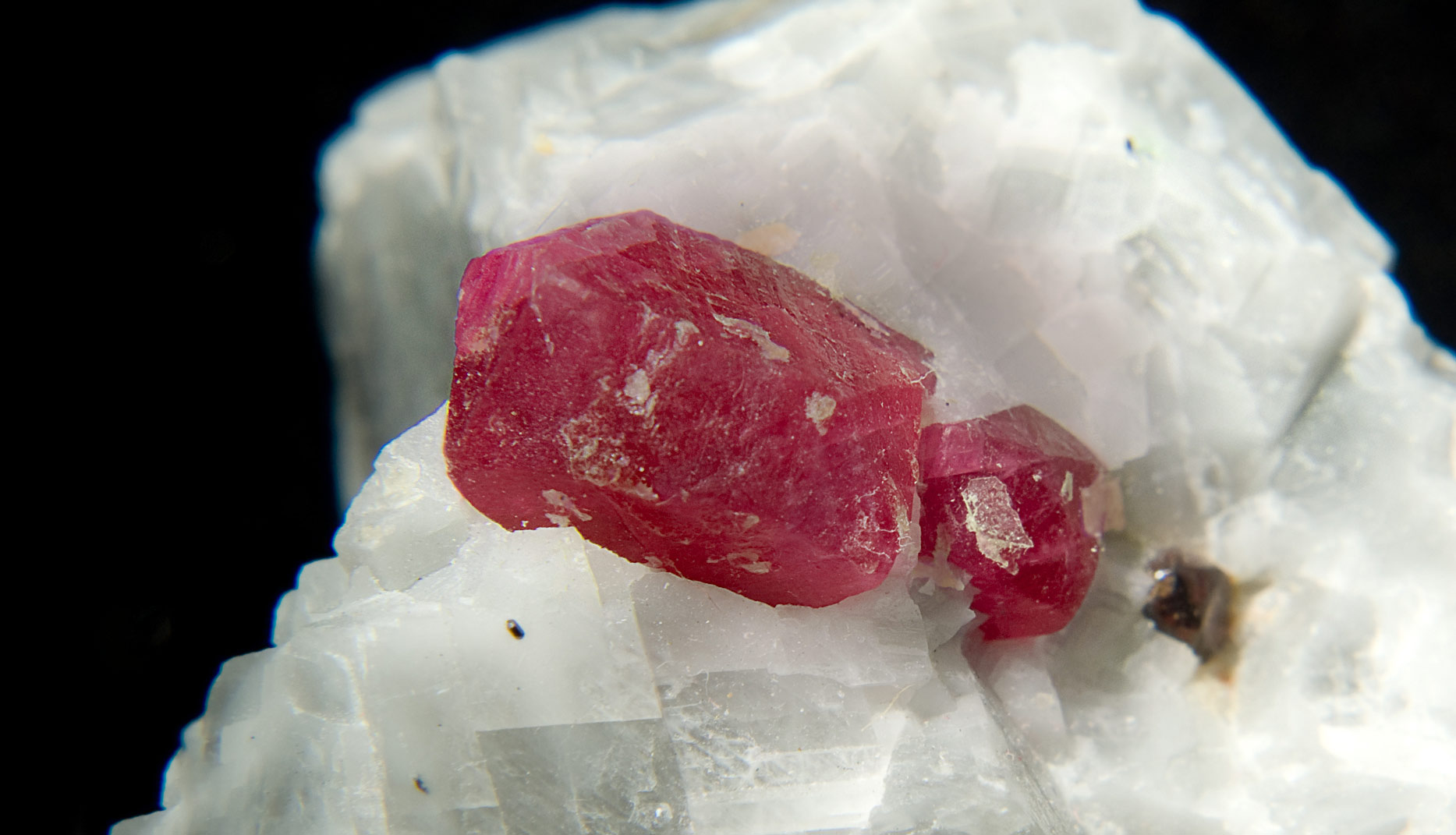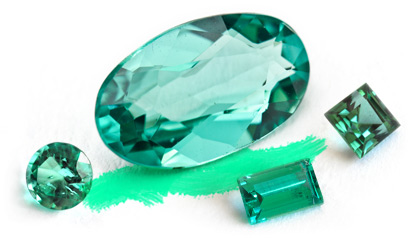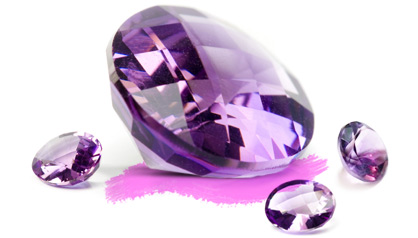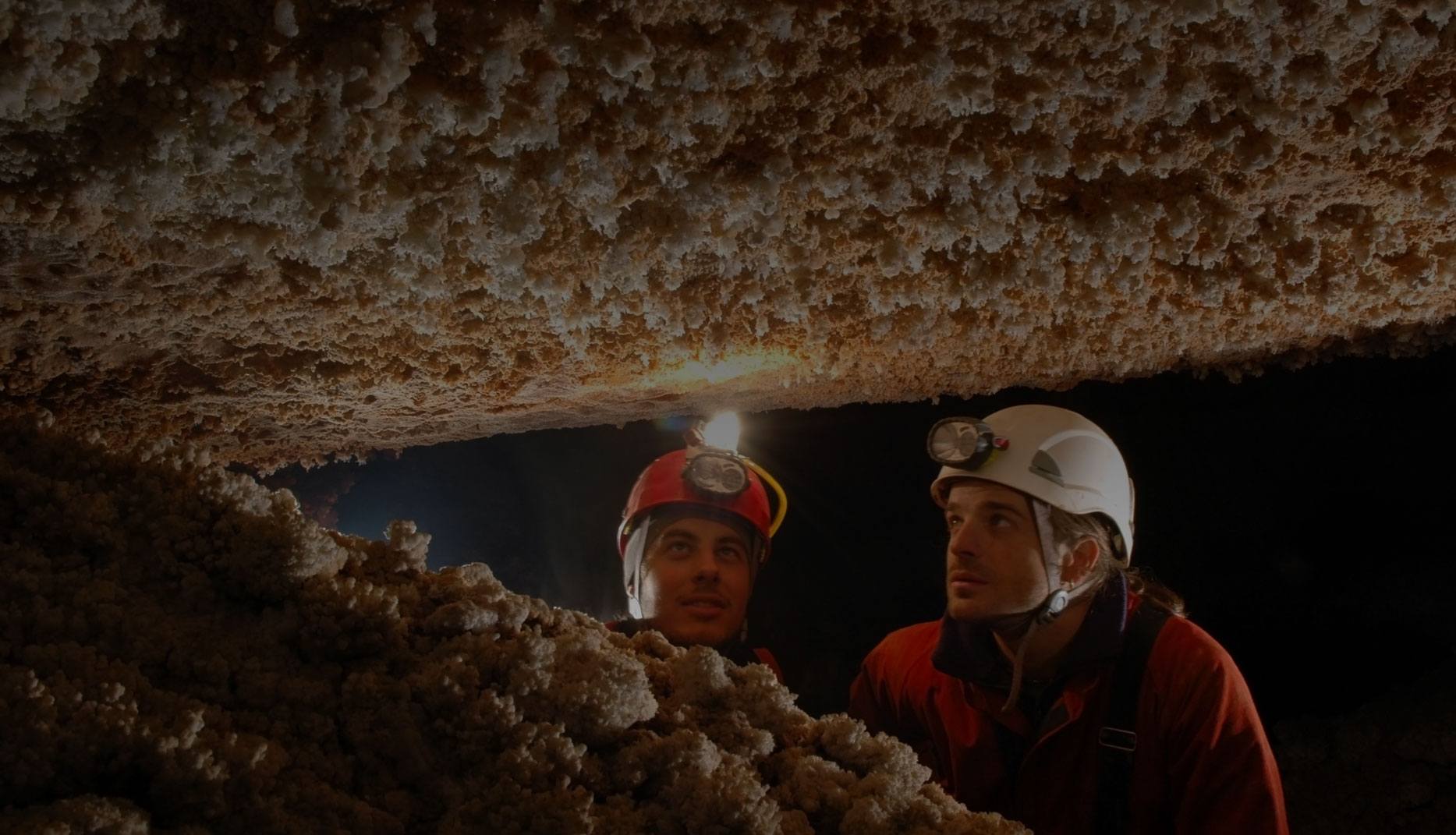Ruby’s scarlet hue is known by many in the trade as the finest red color to have ever existed. Eastern cultures have referred to the best of this variety as ‘pigeon blood’ red, derived from terminology used by the early Burmese miners that traversed on the Mogok Stone Tract decades ago. An unmistakable and near-adamantine luster draws greatly from the hardness of the gem’s surface, causing brilliant reflections to outmatch most other precious gems on the market. Trade members have noted that among the ‘big three’ colored gemstones of the jewelry industry, ruby would often command the highest price per quality level. In fact, certain stones with exceptional characteristics may even go for higher retail prices than a ‘D’ flawless diamond.
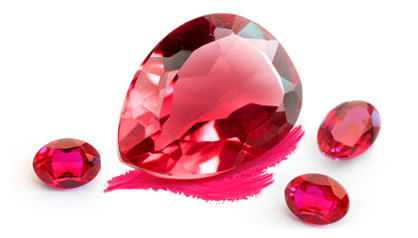
Ruby as a Timeless Gemstone
Drawing from ancient records, the red ruby was once known as “ratnaraj” by many ancestral societies. This Sanskrit title was later on translated to mean “the king of precious stones”, a tributary phrase to mark the illustrious presence of ruby amongst the world’s most coveted treasures. Different symbolisms and traditions made use of this vibrant gem to signify the beauty of human passions and the strength of history’s most powerful monarchs. Times of fortune and rule were often coupled with an assemblage of fine gemstones, jewelry and treasures untold. It’s no wonder that nobles from all over the world would commission the excavation of top quality rubies from the most remote and inhospitable regions on the planet.
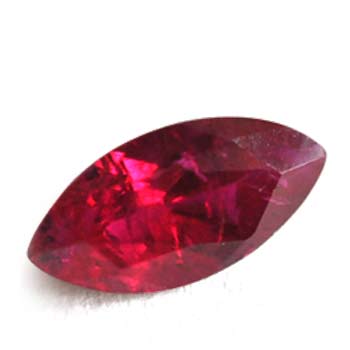
Ruby and Spinel
Until modern gemology came about, many red spinel gems were once thought to be ruby. The two are often similar in appearance.
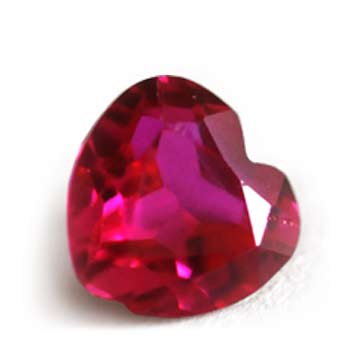
Passionate Reds
Rubies are required to have a dominant red hue and strong saturation. Any other corundum will be considered as a sapphire variety type.
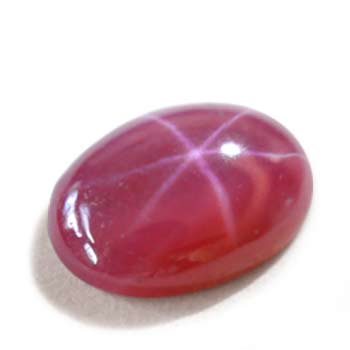
Asterism in Rubies
Natural and synthetic rubies can both come in a special variety called "star ruby" or "synthetic star ruby", if they show an optical phenomenon known as asterism.
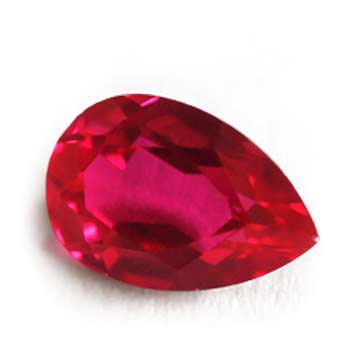
High Value Auctions
The finest rubies have been purchased for values over three million dollars in the past decade, with many high profile stones being auctioned by Christie's and Sotheby's.

Heat Treatment
Over 95% of gem-quality rubies on the market, undergo some form of heat treatment to enhance their color, clarity or even both characteristics together.
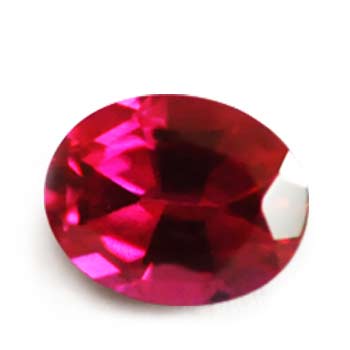
Inextinguishable Fire
Ruby’s glowing red hue was often likened to an inextinguishable flame, giving rise to the belief of its wearer’s prolonged life.
"Ruby, sapphire and emerald are collectively known as the ‘Big Three’, however the first two gems actually belong to the same mineralogical species; corundum, which makes them very similar in crystal chemistry. Despite this, rubies are often met with higher prices than sapphires of equivalent quality. Gem varieties that belong to the corundum species hold a superior hardness of 9 on the Moh’s scale, and rank second only to diamond. Combine that with an exceptional crystal durability, and you have one of the world’s strongest materials."
Science has taken us to the heights of ruby identification. We can now distinguish between the various enhancements, varieties and synthetics out there in the market. The gemological advancements of today’s modern technologies have made this possible. Up until a few centuries ago, all red gems were once labeled as rubies. One famous stone, the “Black Prince Ruby” was later on studied by gemologists and identified as a spinel. Despite this, it’s still one of the largest gem-quality spinel specimens to date. The majestic stone currently rests above the 317.40 ct Cullinan II diamond on England’s Imperial State crown.

Above we can see from left to right: (i) a faceted plastic imitation gem, (ii) a synthetic corundum ruby sample, (iii) a fracture-filled treated corundum sample, and (iv) pink & red natural corundum gemstones.
High quality rubies are exponentially rarer than their spinel cousins, yet many of the world’s finest rubies do have one historical source in common- these would be the rich earth fields of Myanmar, whose lands are host to the famous Mogok Stone Tract. It was precisely at this remote location that fine rubies of the “pigeon blood” color designation were unearthed and paraded into the high-end markets. Today, civil unrest and warfare in some areas of the country are making ruby acquisition even rarer. The mines of Mogok have traditionally been known to produce the best quality of ruby, however some other areas of Myanmar must also be mentioned for their widespread production of this incredible gem. One such place is the Mong Hsu region, whose rubies have supplied the connoisseur society with thousands of carats during the height of Myanmar’s position as the dominant ruby source. Travellers from all over the world came to hunt down the precious gems. Many of them took their material to the nearby country of Thailand, where a community of gem dealers soon found ingenious ways to enhance the stones even further. They discovered that the application of heat and oxygen can slightly alter the existing color of corundum. By carefully subjecting certain stones to studied temperature environments, the Thai were able to harness nature’s power to permanently intensify the color of some particular stones. These old secrets were then passed on through generations of Ruby merchants, and are still used today in the processing of both rough and cut ruby material.
About 90 to 95% of the world’s rubies today undergo this accepted heating enhancement, but the rarer few that remain un-enhanced command a much higher premium on most international markets. Such “unheated” rubies are scarce in the top qualities, and can surpass the prices of fine diamonds, sapphires and emeralds. Auction houses often seek out specimens in the larger size brackets, and parade them across countries as part of their international bidding tours. These magnificent rubies from all over the world are currently on the rise as hard investment assets.
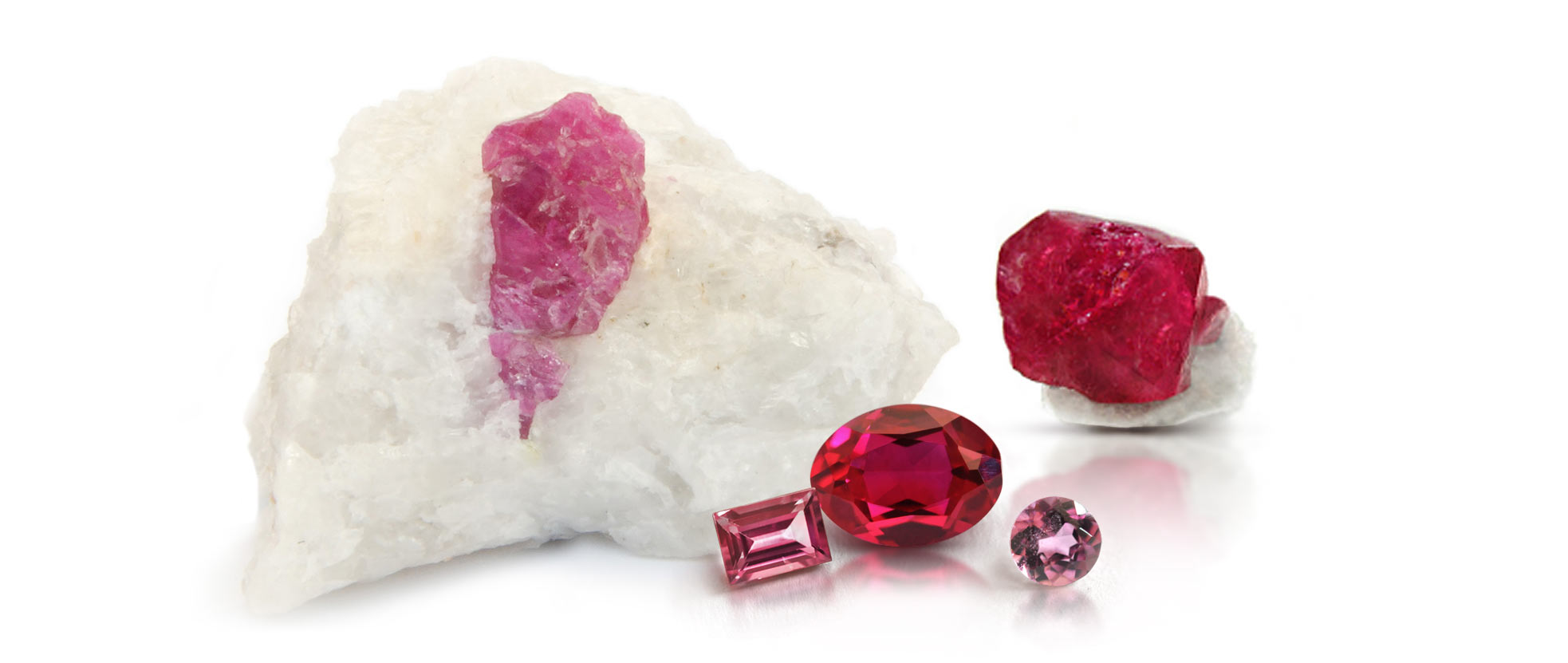
Fine rubies have also been sourced from other far-off places, such as the Luc Yen and Quy Chau regions of Vietnam, where the locals sometimes call mining areas by extravagant milestone names. Two examples might be “millionaire hill” and “billionaire hill”, which are both known for harboring the high quality rubies that put Vietnam on the map as a prime mining destination. Another nearby region called Yen Bai is famous for producing star rubies, which are stones that showcase a visual phenomenon of light across the domed top of a polished gem. The exceptional qualities that come out of Vietnamese mines can sometimes be likened to those of Myanmar’s historical deposits. Similarities in the geological conditions of these sources have been studied so that future mining operations might be able to better track down deposits of high quality stones. A percentage of Vietnam’s current ruby production also passes through the processing plants of Thailand, which is now considered to be a worldwide hub for the wholesale trade of ruby.
Caring for Jewelry Items and Evaluation of Gemstones
Just like most durable gemstones, ruby can be cared for with relative ease. Its toughness and hardness factors allow it to resist most agents of wear, but do make sure not to keep stones in contact with diamonds or other gems of the corundum species (like sapphire). Likewise, stones with certain treatments like dyes, fracture filling or surface coating must be cleaned with special care. The ultrasonic and steam cleaners used in general jewelry cleaning may sometimes damage fracture filling in rubies, or commercial-grade surface coatings. Rubies that are simply heat-treated without any other additives or processes are usually just as durable as untreated stones, and can be cleaned with warm soapy water.
Jewelry Repair
Ruby jewelry repair can sometimes be tricky for stones that are enhanced beyond the normal heat treatment procedures. Most stones are removed from their setting first to be safe, but stones left set in their mounting can sometimes be covered with protective agents to prevent damage or alteration by exposure to torch fire or certain chemicals.
Frequently Asked Questions

How is ruby different from Pink Sapphire?
Both are gem varieties of the mineral corundum and get their color from the element chromium, however the line is drawn when a specific gem does not possess one of the following characteristics: a dominant red color, dark enough tone, or strong enough saturation. In line with these restrictions, the exact levels prescribed for these traits are sometimes debated over by trade organizations and members. Our own opinion states that for any gem-quality corundum to be considered a ruby, it must possess a dominant red color (with or without a modifying color), and should have at least a tone of 5 (Medium) and a saturation of 4 (Moderately strong), following the colored stone scales set by the Gemological Institute of America.
Are there man-made rubies?
Man-made, laboratory grown or synthetic rubies all refer to corundum specimens grown using chemicals in a controlled, human-influenced apparatus. They’ve been around since 1837 and are used for aerospace, chronographic, optical and jewelry purposes. It’s actually very simple for most gemological labs to differentiate natural ruby from the majority of synthetics used in the trade today due to tell-tale signs that each creation method leaves within the man-made stone products.
What are glass-filled rubies?
One of the most recent topics in ruby treatment is glass-filling stones. These enhanced ruby products usually start off as commercial to very low grade ruby, and are later infused with a molten glass mixture. The entire process improves the “apparent” clarity of a stone, and provides the look of a higher quality ruby for barely a fraction of the expense. Often times, basic identification of specimens can be done with a loupe, as gas bubbles or swirled lines or internal colored flashes are often present. Many stones are commonly available today at affordable prices, but gemological laboratories disagree on whether these stones should be considered as treated natural rubies or manufactured composite products. It should also be noted that some durability issues come with this treatment, such as the degradation of glass from wear-and-tear or jewelry cleaning procedures. Each treatment procedure however, may produce products slightly different from those of another method, processor or batch.
What is the most important quality trait for ruby?
For all gem-quality rubies, color is always the most defining value factor. A red hue with an intense saturation is often preferred, while a slightly purplish red hue would also qualify for the top category. Several other hue combinations rank just below these two, including orangey red and strongly purplish red. Color grades are also influenced by tone, because light tones would manifest a variety label of pink sapphire instead of ruby, and dark tones may mask color brightness.
How do heated rubies compare with untreated ones in price?
Light to mid-temperature heat treatment can permanently improve the color in some rubies, but the effect is not consistent for every single stone. Results still vary depending on each specimen’s exact composition, which is why heated rubies still command a very high price in general. Comparatively, unheated stones tend to price higher, depending on the quality level present. An unheated 8 ct. ruby with intense red saturation could be many more times more expensive than a heated one of equivalent standards, but a brownish red 0.5 ct. stone might not have much of a price difference between its heated and unheated counterparts.
Why aren’t most rubies cut like diamonds?
While cutting style for diamond accents the scintillation and brightness of a stone, proper cutting for ruby usually prioritizes a gem’s intensity of color and saved carat weight. Notice that many rubies will have a step-cut or slightly bulged pavilion. This is because more material means that light passes through the gem for a longer span of time. When this happens, other colors within the light are absorbed and the remaining red color shows up prominently.
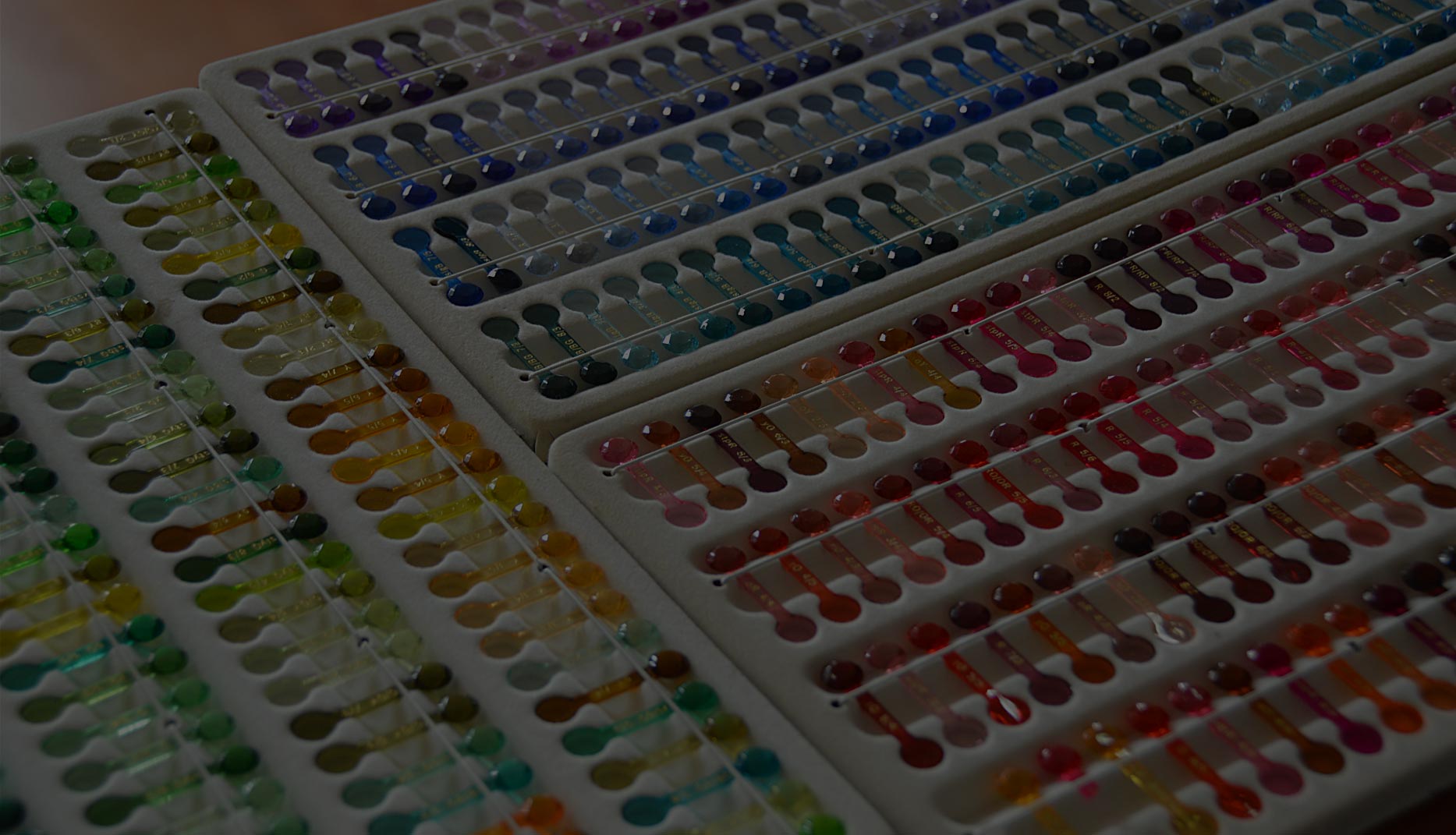
Ruby Gemological Information
Gem Species:
Corundum
Composition:
Al2O3
Orangey Red to
Purplish Red
Refractive Index:
1.762 to 1.770
Specific Gravity:
4.00 (+/- 0.05)
Hardness:
9 (Mohs)
Gemologist's Lab Notes
The Scientific Identification of Ruby
Ruby is a variety of corundum, and therefore is essentially the most stable crystal form of aluminum oxide. It is colored by a trace element called chromium, which can also cause the occurrence of fluorescence in the form of red light upon ultraviolet stimulation. A hardness rating of 9 means that its surface can resist scratches from materials other than diamond or another corundum. Apart from this, ruby does not have any cleavage break planes, and is actually tougher in terms of durability when compared to diamond (which does have vulnerable directions of cleavage).
Rubies have exceptional gemological characteristics that allow us to differentiate it according to its crystal system, variety and species. A basic set of gemological tools is often enough to identify and separate ruby from most of its common lookalikes and man-made counterparts. One such tool would be the refractometer, which evaluates how light travels within a gem. The refractive index of ruby is 1.762 to 1.77, a usual constant that helps with routine gem identification. RI is often used as a dependable property, as it measures the refraction of light in a gem material. Likewise, as a doubly refractive gem, ruby can also easily be separated from glass imitations using a standard polariscope. Results would show the stone blinking from dark to light as it rotates 360 degrees on its base while being viewed between crossed polars. This only happens due to the anisotropic nature of the lattice system that rubies belongs to; the trigonal crystal system, which also hosts sapphire, quartz and tourmaline as members. Most rubies also show another optical property called pleochroism, usually in orangey red and purplish red. This can be observed using a standard gemological dichroscope, which is an instrument that allows the different colors to be seen side by side.
Why Are Rubies Red?
While corundum on its own is essentially colorless, rubies display their reddish color because of a very small amount of chromium laced within their atomic structures. The actual percentage is so miniscule that it would be too difficult to trace without the help of modern scientific equipment. When light enters a ruby, the unique crystal composition of the gem allows it to selectively absorb some colors, and leave others (namely red) to return to the human eye. This does not mean that all gems colored by chromium will be red. The trace element that makes emeralds green also happens to be chromium. Every color results from a specific group of variables that react together to produce a certain result. The added presence of iron in ruby can tint it with a slight purplish hue for example.
Ruby and Red Spinel
While nowadays people can easily differentiate between two different gem species, ruby and red spinel were once thought to be the same thing. These two gems can sometimes be found alongside each other, especially in alluvial deposits of gem gravel. One good way to separate them is to use the polariscope to determine their optic character. Natural spinel is isotropic and will show up dark under crossed polars, while ruby will blink from light to dark because its structure is anisotropic. Some other tests can also be performed, such as the taking of distinct RI measurements or searching for facet edge doubling with a microscope. Many fine quality red spinels might also be expensive in their own right, however rubies still remain prevalently more costly, especially in the higher qualities.

Ruby’s Pleochroic Colors (Dichroic)
Ruby gemstones are pleochroic and can show both orangey red and purplish red colors side-by-side when viewed using a dichroscope. This helps to separate ruby from red spinel which does not show pleochroism, but instead shows a single color only when viewed using the same instrument.
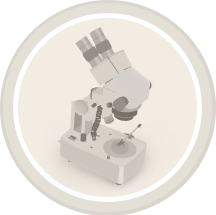
Silk Inclusions in Some Ruby Gemstones
Speaking on the topic of clarity characteristics, silk is a term used for groups of very fine needle-like inclusions that can be found in ruby. These inclusions are sometimes helpful aids for determining a stone’s origin, and might also increase the value or beauty of some exceptional specimens.

The Observance of Red Fluorescence
Both natural and synthetic rubies contain chromium, so fluorescence for either will appear as the emission of red colored light. The UV exposure test can be used as a separation method against other red stones that do not possess this property. Long wave ultraviolet light best induces the characteristic red fluorescence often observable in rubies.
Qualities, Value and Demand
Pricing a ruby gemstone depends on a set amount of quality characteristics with color being the most influential, followed by clarity and carat weight. These factors may sometimes be shifted around in rank, depending on special circumstances (like for example, exceptionally large stones). The issue of cutting style is less important for valuation, for as long as basic symmetry appeals to the eye.

Perhaps the oldest precious gemstone known to man, ruby has become one of the most iconic and popular symbols of power, wealth and influence in the world. Its story in the archives of human history goes as far back as the kings and queens of ancient civilizations. Early writings depict a cultural appreciation of the red stone as a unique treasure of immense value and heritage. It’s no wonder that the finest rubies of the modern world are now in the vaults of international auction houses and connoisseur collectors. The idea of value resonates with ruby’s importance as a natural rarity. For someone to gauge the monetary equivalent of a certain ruby, many things must be considered aside from its known set of qualities. Aspects such as provenance (a stone’s history of owners and travels), source country, market availability and comparative demand must all count in the investment cost of a buying a fine gemstone. It is likely that the values of such assets will continue to appreciate in the coming decades, following the century-long trend of gemstone valuation amongst world societies. The scope of gemstone investments in a contemporary setting started with the rise of diamonds as a commodity (similar to gold or silver). This movement is slowly hitting its stride, as the market begins to re-adapt to the notion of hard assets being the safest investments in a fast-paced digital society.
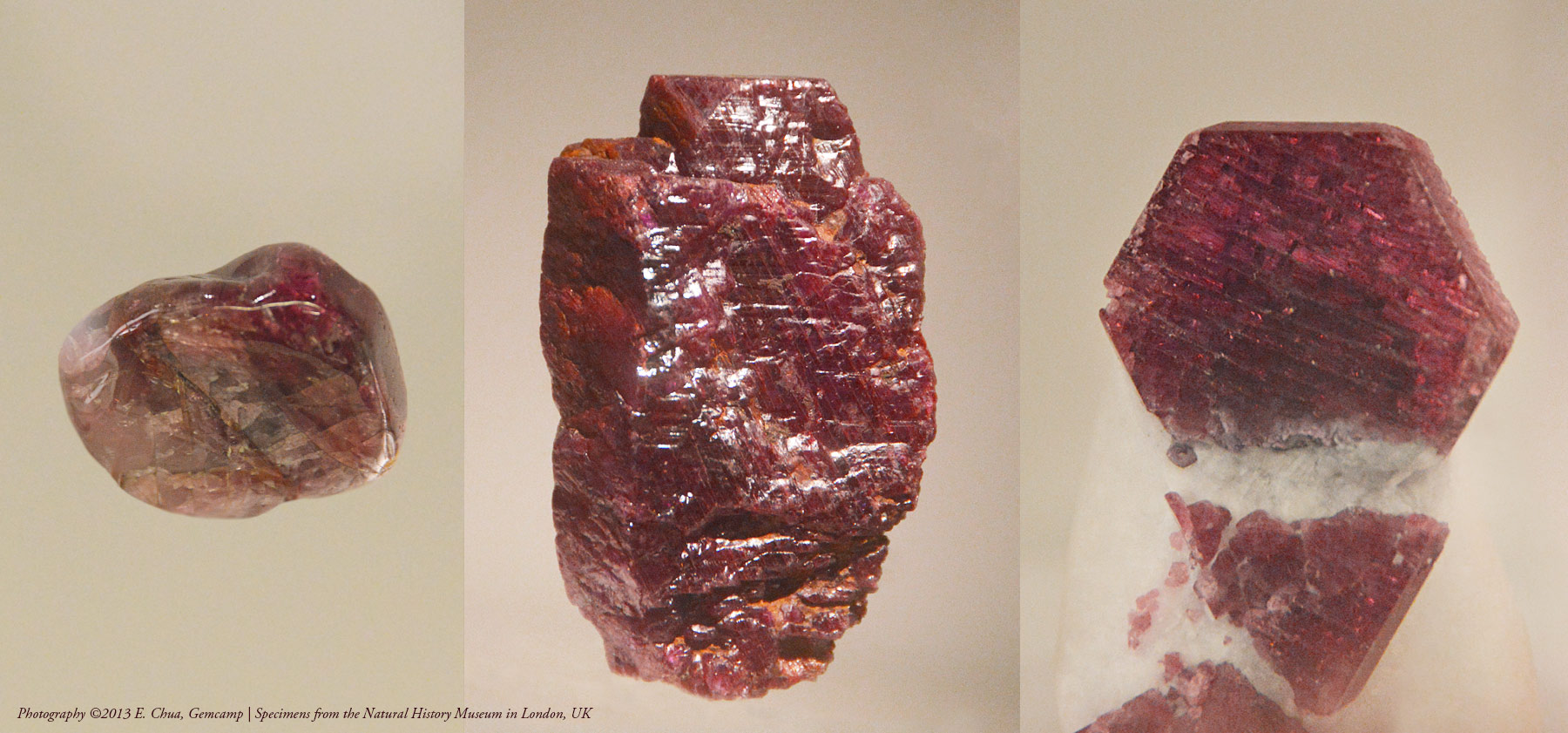
For every stage of quality, from commercial to high-end grades, the ruby has been a constant participant in most online and offline auction houses. Many loose gems are now being set aside as personal storages of wealth, and jewelry items as always have been designated as valued heirlooms for cross-generation inheritance. With the advent of advance gemological certification, rubies can now be traced to famous origin localities like Myanmar and Sri Lanka, providing added information about natural gemstones and their rarity as non-renewable treasures. Jewellers from all across the globe now congregate at the current worldwide hubs for the ruby industry, which include Thailand as a center for processing and cutting, Hong Kong as a major trading port for international markets, and the US as one of the major proprietors of ruby crafted fine jewelry.
Synthetics, Imitations and Treatments
Because of ruby’s modern popularity, scientists have invented several ways of creating its man-made equivalent. The flame-fusion technique is by far the most popular and most affordable synthesizing method used today, followed in suite by several methods for growing flux and hydrothermal synthetic stones. Ruby imitations on the other hand, have been on the mainstream market for as long as the gem itself has been desired. Commonly seen simulants might include synthetic spinel, synthetic corundum doublets, and dyed red glass.
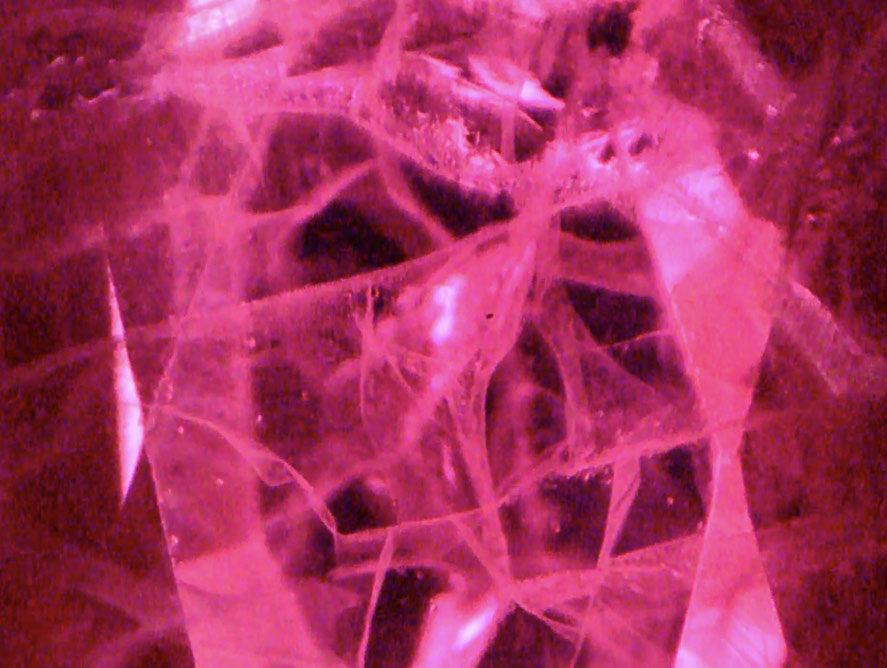
Synthetic | Flux Growth
Veil-like flux fingerprint inclusions within a synthetic ruby specimenA common observation in flux-grown man-made rubies would be the presence of flux fingerprint inclusions that resemble wispy flowing veils. They are often non-planar unlike natural ruby fingerprint inclusions.
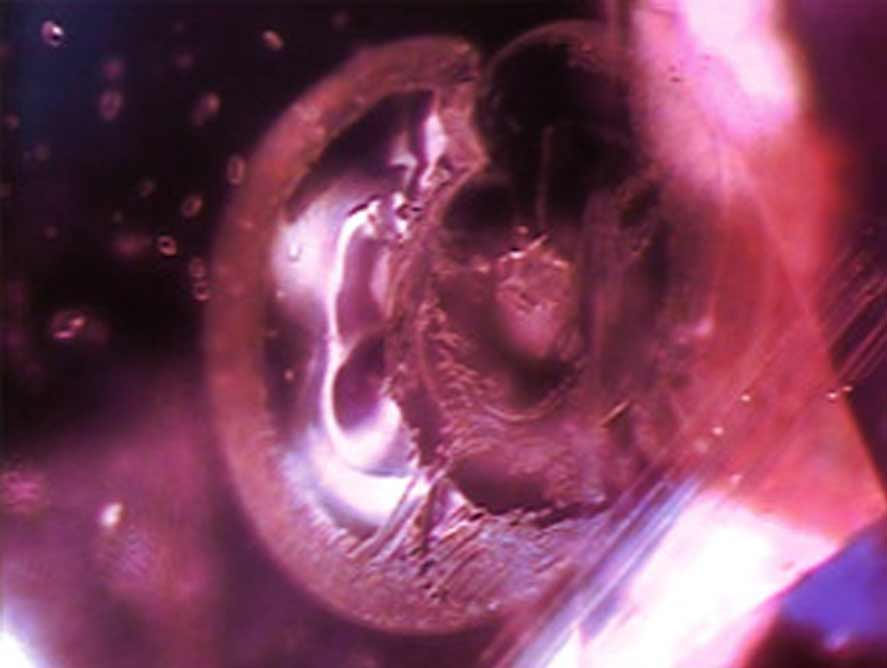
Treatment | Heating
A crystal inclusion surrounded by a halo-like tension fractureHeating a gemstone can expand certain inclusions quicker than the surrounding material, causing a tension "halo" or circular fractures to occur around the original inclusion.
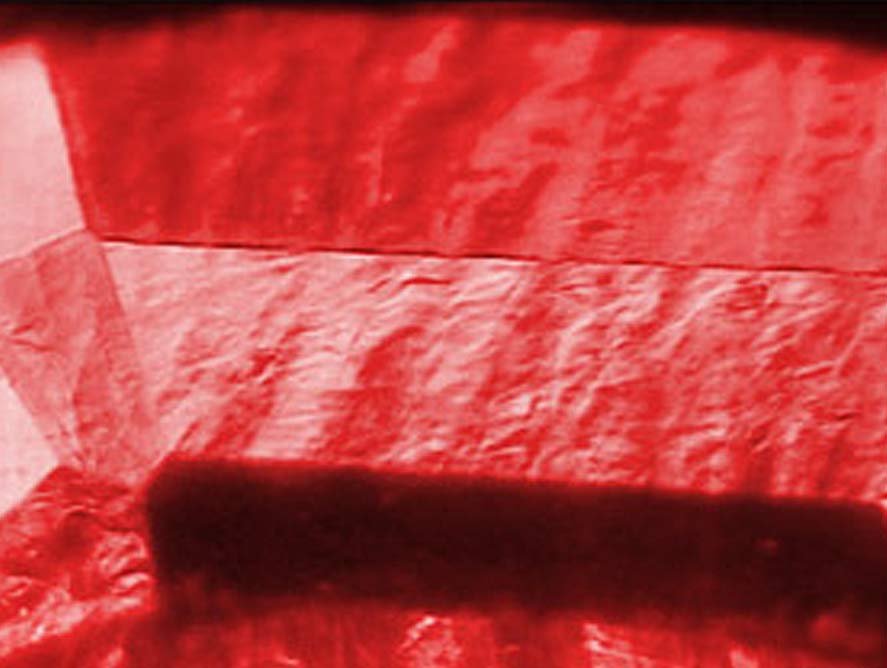
Synthetic | Hydrothermal Growth
Chevron growth markings visible inside a synthetic ruby created by the hydrothermal growth techniqueSynthetic corundum specimens grown by the hydrothermal method can visually exhibit undulating and chevron-shaped growth marks in certain viewing angles under standard microscopy.
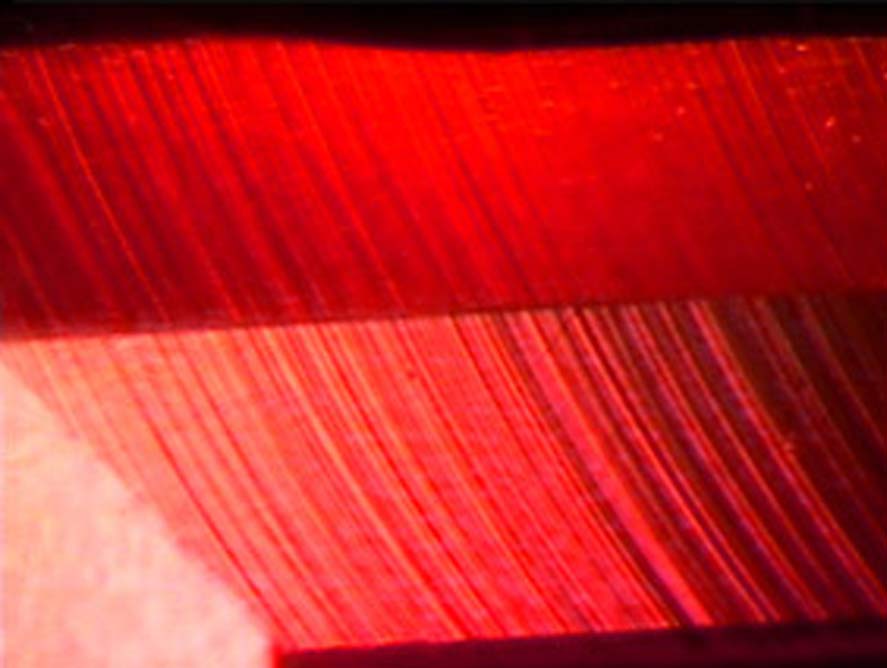
Synthetic | Flame Fusion
Curved striae microscopically visible within flame-fusion grown synthetic rubiesThe oldest method for growing rubies; the flame fusion technique, will produce curving striation marks within the gemstone's interior. Make sure not to confuse these with polish lines which are only located on the surface facets.
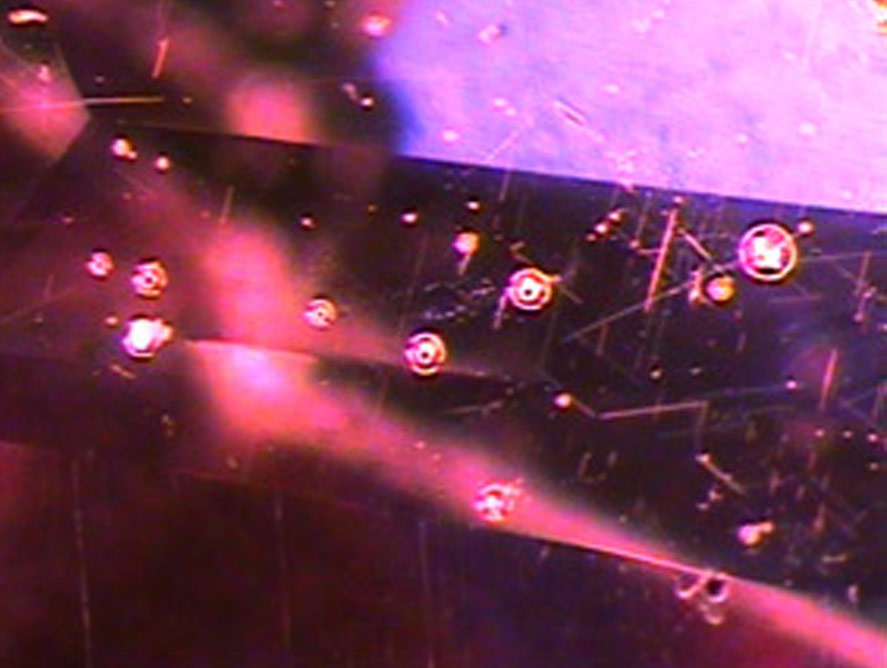
Treatment | Fracture-Filling
Visible gas bubbles inside a natural ruby that was fracture-filled with lead glassMany low quality natural rubies are fracture-filled with high RI lead glass to improve clarity. Gas bubbles and orange-to-bluish flash effects near fracture areas, are some of the observations you may notice on these treated specimens.
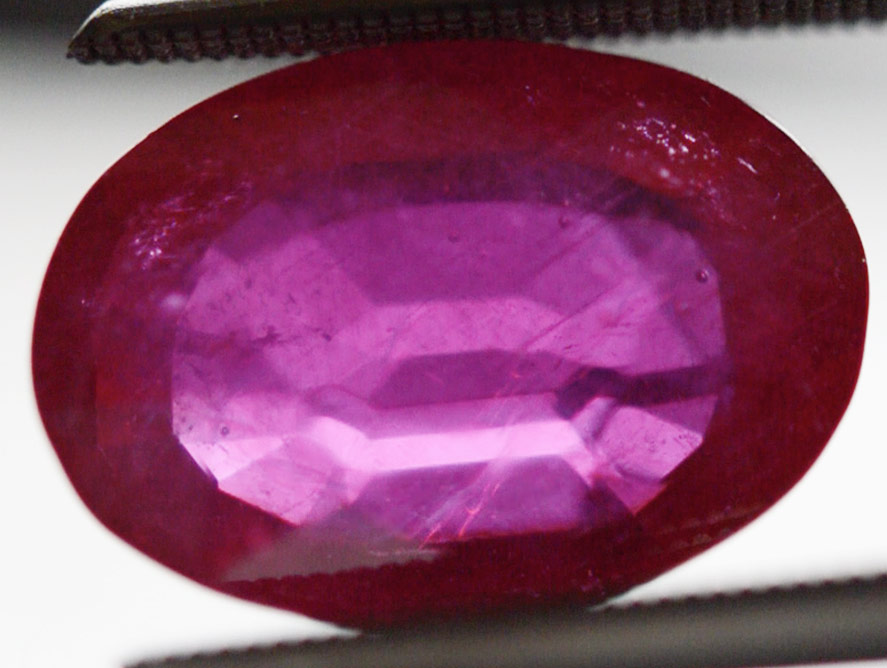
Treatment | Fracture-Filling
An orange to bluish flash effect visible on this lead-glass filled rubyOrange to bluish flashes near fractures are a common sight when viewing lead-glass fracture-filled rubies under the microscope, though sometimes they may only be obvious in certain viewing directions.
Contact Us
Get in touch with a Gemologist.
For gemological assessment requests, our laboratory evaluates gemstones as an impartial third-party assessor.
